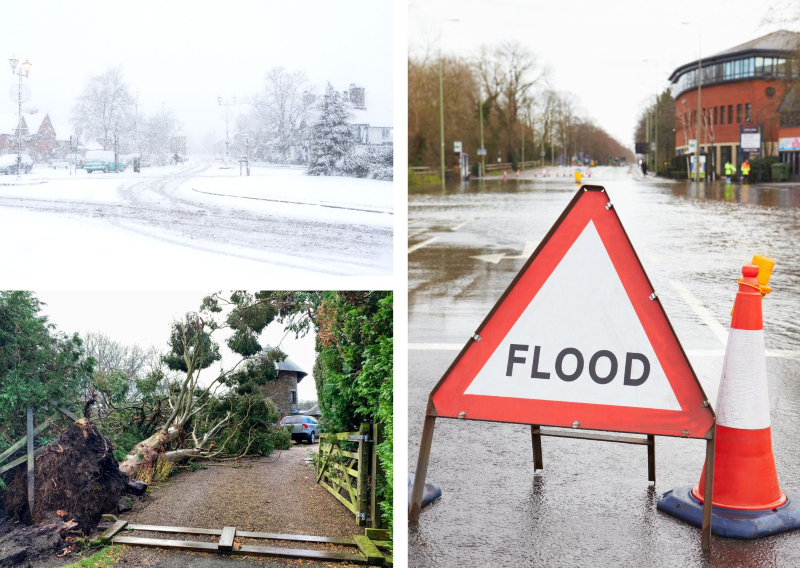Not-for-profit insurer releases preparedness guide amidst rising weather risks

A mini October heatwave occurring a matter of days before Storm Babet – the second named storm of the season – serves as a stark reminder that we have reached the time of year when the British weather can be extremely unpredictable.
The effects of climate change continue to elevate the risk of storm damage and flooding. In fact, seven of the wettest UK winters on record have occurred since 1990, and three named storms hit the UK within a seven-day period in 2022 – the first time that has happened since the Met Office began naming storms in 2014.[1]
Ansvar, the leading experts in insurance solutions for the charity, not-for-profit and faith sectors, is urging organisations in these industries across Essex to be ready for upcoming unexpected occurrences. This preparedness can make a critical difference in mitigating the impact of disasters and ensure organisations remain functional to support their communities, even in times of crisis.
Adam Tier, Head of Underwriting at Ansvar, commented:
“While we cannot control the weather, organisations can control how prepared they are for its consequences. As we are all witnesses to an increase in extreme weather events, the importance of appropriate insurance and business continuity and disaster recovery planning cannot be overstated. It is crucial for charities and not-for-profits to think proactively about how they would continue to operate and provide vital services in the worst-case scenario.”
To help not-for-profit organisations navigate this evolving landscape, Ansvar is releasing the following guide:
Conduct a comprehensive risk assessment: Understanding the specific risks associated with a geographical location and the nature of operations is the first step towards preparedness. Assess the potential impact of extreme weather events on an organisation and its assets.
Establish a specialised committee: Establish a disaster readiness committee comprising individuals who are responsible for assessing, planning, and implementing disaster recovery measures. Ensure that each member has clear roles and responsibilities.
Prioritise actions and emergency responses: Develop a comprehensive disaster recovery plan that outlines the specific steps to be taken in the event of an emergency. Prioritise the safety of staff, volunteers, beneficiaries, and critical assets, as well as essential functions and services, ensuring their continuity during crises.
Review insurance requirements: A charity or not-for-profit organisation’s operations can be extremely fluid, so it is vital to regularly update insurance coverage to ensure all activities are sufficiently protected.
Test, review and adapt regularly: Regularly review and update a disaster recovery plan to reflect changes in an organisation’s needs and external factors. Conduct mock drills and exercises to ensure a team is well-prepared for emergencies.
Adam Tier added:
“Insurance plays a pivotal role in helping not-for-profit organisations recover from unexpected disasters. It provides financial support for repairs, replacement of assets, and the ability to maintain critical services during times of unpredictability.
“We understand the incredible work that charities and not-for-profits do in the Essex community. Ensuring they are adequately prepared is not just about protecting their assets; it is about preserving their ability to continue making a positive impact on the local society. Ansvar is committed to supporting these organisations in their mission to serve others, come rain or shine.”





